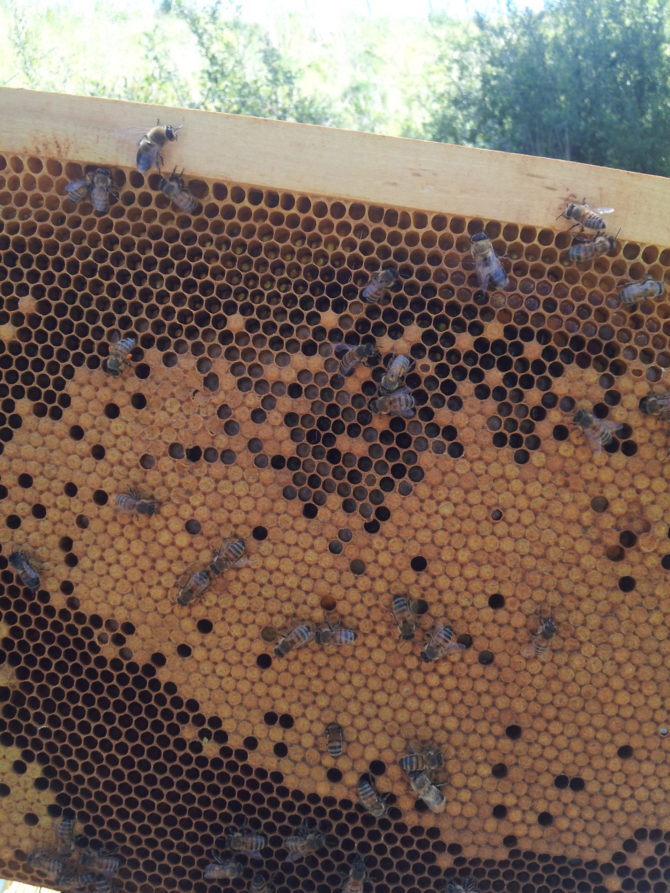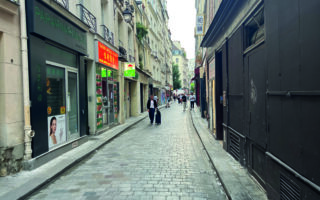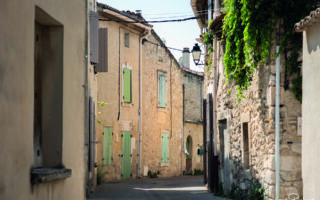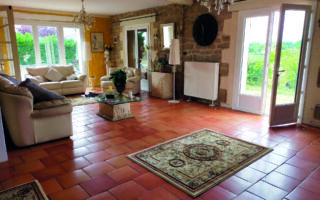Beekeeping in the Charente – June
Community

More than ever I find myself obsessed with the weather since I moved to France; every day I check the forecast to see what we are likely to be getting. In May it seemed that it was a month of all four seasons – 28c and full sunshine one day, 8c and drizzle the next…
As a beekeeper it’s been quite difficult to keep on top of things as, in order to manage and control swarm activity, you really need to be able to open the hives to find out what the little darling bees are doing. When it’s cold and wet it’s not advisable to do this, but in the meantime the bees are plotting inside the hives and the minute the sun comes out, bang!
Forgive me if I sound a little paranoid, but sometimes it does seem as if conspiracy theory applies to these fascinating insects…One hive in particular wasn’t impressed with the recent state of affairs and the bees were decidedly grumpy at being forced to stay inside on a very wet day. I went to check on them one warmish morning and they let me know what they thought about being bothered. They set about stinging my gloves over a dozen times. That’s the thanks you get for looking after them!
At this time of year the bees are thriving; the queen is laying up to 2,000 eggs a day, so you don’t have to be a maths genius to work out that in a handful of weeks the colony will have grown somewhat. The photo shows a frame of sealed brood and some larvae, plus a lot of empty cells where baby bees have just hatched. (This frame doesn’t have many bees on it as we shook them off to have a look at the brood). Flowers and trees are full of pollen and the bees are foraging like crazy, collecting food for their burgeoning families.
When it’s hot they will also be seeking out water sources, and if these are scarce the bees will turn up in unusual places such as the edge of swimming pools or around outside tap. If you have a problem with bees drinking in these locations, it’s not a bad idea to leave out a shallow saucer of water in a convenient place. They’ll find it and if you put some sticks in it the bees can sit on the floating platforms and drink without drowning.
We were feeding our colonies, including the swarms we collected, with a weak sugar solution to help stimulate them, but now there is plenty of nectar and pollen around we have stopped providing this free buffet. This means that we can ‘super up’ i.e. put super boxes with half-size frames on top of the brood boxes. The all-important queen excluder (a plastic mesh sheet with holes big enough for worker bees to pass through, but too small for the queen) goes in between the boxes so that no eggs are laid in the super frames. The bees store the nectar here which they eventually turn into honey and which we will gleefully remove when they are full in a couple of months’ time.
It’s important to keep an eye on the bees’ stores as sometimes there’s what is known as “the June gap”. This is where one tranche of flowers finish blooming and the next hasn’t yet started, so for a short while there is no nectar available and the bees may starve. The observant beekeeper can step in and feed the bees for a short time. If feeding a colony then it’s worth pointing out that any honey made at this point will have a higher-than-usual sugar content and probably won’t be viable for commercial sales (it’s perfectly safe/legal for home use). You can sometimes tell if honey has come from bees who were fed because there are sugar crystals forming in the jar.
Putting a super on also means that the bees have more space and so (hopefully) are less inclined to swarm. Swarming should be over by June, but some bees just have the moving-house habit. In this case it’s important to keep checking for queen cells and removing them if found, either by destroying them (provided you have a healthy laying queen in the colony) or moving them to a queenless hive.
As always, please don’t hesitate to get in touch if you have any questions on any aspect of beekeeping and we’ll do our best to answer them/help you.
Amanda and Kevin moved to Confolens (16) in 2015, opening a chambre d’hôte and launching their beekeeping experience holiday business. They live with five cats, two tortoises and several thousand bees, and enjoy sharing their adventures in the apiary with others.
Share to: Facebook Twitter LinkedIn Email
Leave a reply
Your email address will not be published. Required fields are marked *



